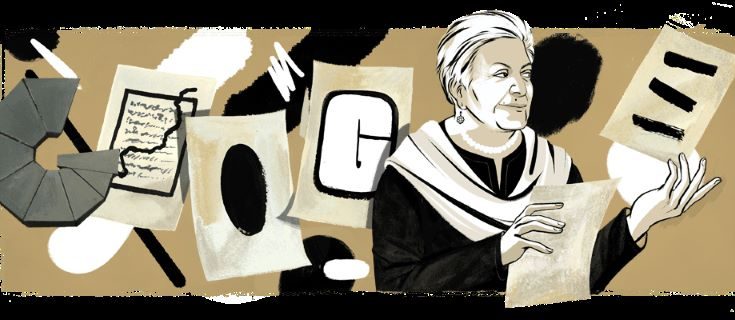#ZarinaHashmi, #GoogleDoodle, #Google, #ArtistsofColour
New Delhi/IBNS: Google honoured Indian-American artist Zarina Hashmi by featuring a doodle on her 86th birth anniversary with a creative doodle depicting her persona and work.
Hashmi is renowned for her contributions to the minimalist art movement, making her an influential figure in the art world.
Hashmi was born on this day in 1937 in the small Indian town of Aligarh. She and her four siblings lived an idyllic life until the partition of India in 1947. This tragic event displaced millions of people, and Zarina’s family was forced to flee to Karachi in the newly formed Pakistan.
The doodle was created by Tara Anand, a guest artist based in New York, and it beautifully captures Hashmi’s signature style of employing minimalist abstract and geometric shapes to delve into themes such as home, displacement, borders, and memory.
The tribute serves as a recognition of Zarina Hashmi’s artistic legacy and her profound impact on the art community.
Hashmi was married at the age of 21 to a foreign service diplomat and spent time in countries like Japan, Paris and Bangkok.
The artist became engrossed in printmaking and art movements like modernism and abstraction.
Hashmi moved to New York City in 1977 and became a strong advocate for women and artists of color. She soon joined the Heresies Collective, a feminist publication that explored the intersection of art, politics, and social justice.
She went on to teach at the New York Feminist Art Institute, which provided equal education opportunities for female artists. In 1980, she co-curated an exhibition at A.I.R. Gallery called “Dialectics of Isolation: An Exhibition of Third World Women Artists of the United States.” This groundbreaking exhibition showcased work from diverse artists and provided a space for female artists of color.
A part of the Minimalism Art movement, Hashmi became internationally known for her striking woodcuts and intaglio prints that combine semi-abstract images of houses and cities where she had lived. Her work often contained inscriptions in her native Urdu, and geometric elements inspired by the Islamic art.
People all over the world continue to contemplate Hashmi’s art in permanent collections at the San Francisco Museum of Modern Art, the Whitney Museum of American Art, the Solomon R. Guggenheim Museum, and the Metropolitan Museum of Art, among other distinguished galleries.





